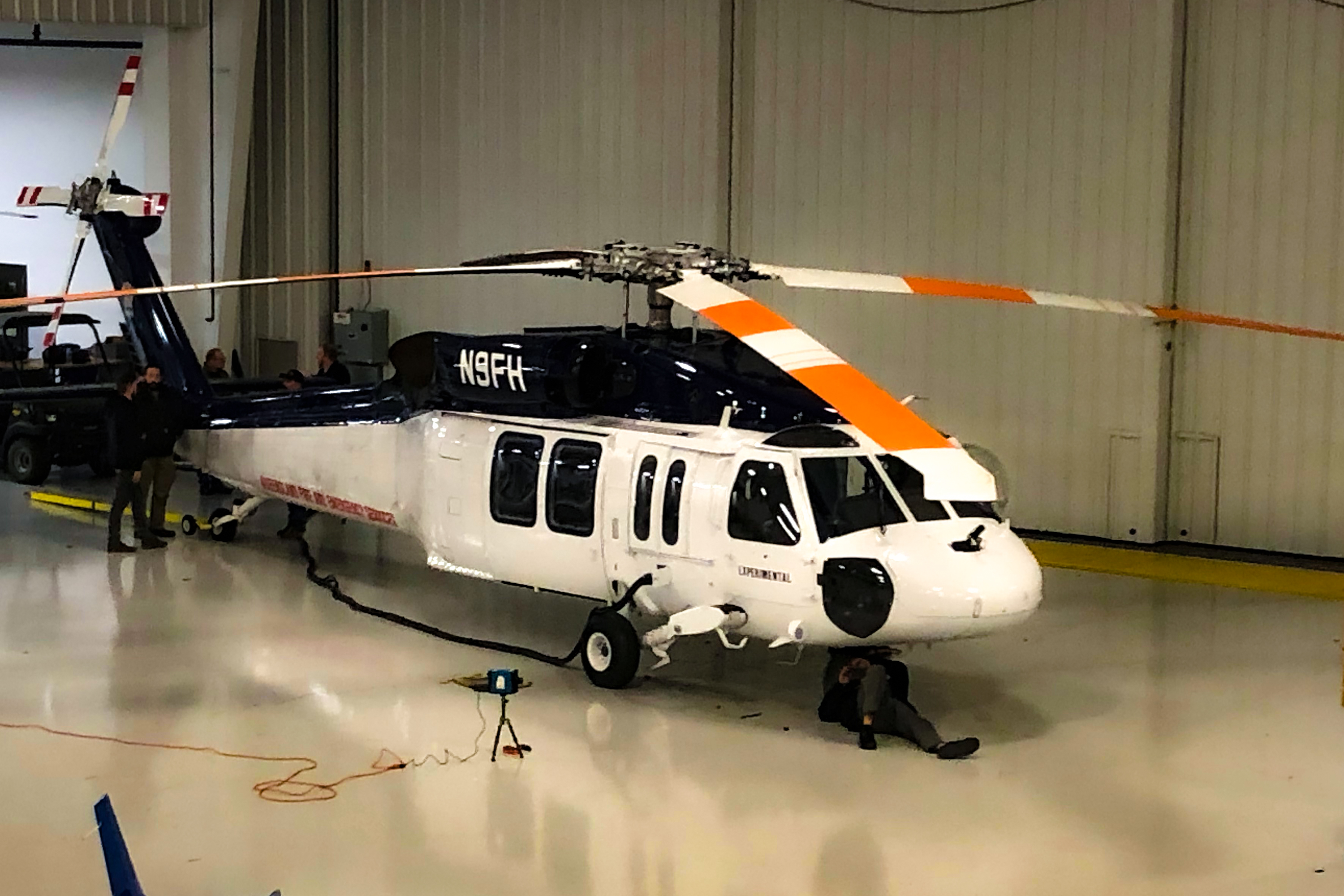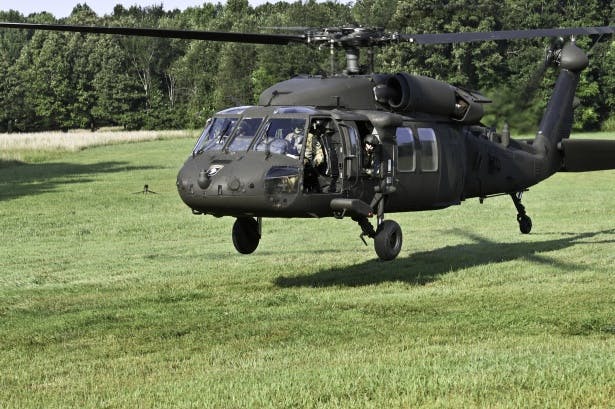UH 60 Helicopter Specifications: What Sets It Apart from Other Military Aircraft
UH 60 Helicopter Specifications: What Sets It Apart from Other Military Aircraft
Blog Article
Everything You Required to Find Out About the UH 60 Helicopter
The UH-60 helicopter, a cornerstone of U.S. Army air travel considering that its launching in 1979, represents an amazing mix of design and functional versatility. As armed forces needs develop, so too does the helicopter, with ongoing advancements aimed at boosting its capacities and integrating modern-day technologies.
History of the UH-60
Developed in the late 1970s, the UH-60 Black Hawk helicopter became an action to the U.S. Army's need for a versatile utility helicopter that can execute a selection of goals under challenging conditions. The catalyst for its style was the imperfections recognized in the earlier helicopters used during the Vietnam Battle, particularly in terms of survivability, speed, and ability to move.
The Black Hawk was developed by Sikorsky Airplane, integrating advanced technologies and materials to boost its efficiency and durability. It was officially introduced into service in 1979, promptly coming to be a crucial property for military procedures - uh 60. Its capacity to deliver troops, clinical emptying, and logistical support in both combat and altruistic objectives made the Black Hawk a very useful part of the U.S. Military's aeronautics fleet
Throughout the decades, the UH-60 has been continuously upgraded, adjusting to the altering nature of war and the developing requirements of modern army procedures. Its operational history includes engagement in significant conflicts, peacekeeping missions, and catastrophe relief efforts, strengthening its online reputation as a reliable and trusted helicopter in different settings worldwide.

Layout and Requirements
The style of the UH-60 Black Hawk helicopter constantly reflects a dedication to operational performance and convenience. Developed by Sikorsky Airplane, this medium-lift utility helicopter includes a sleek, aerodynamic fuselage that enhances speed and ability to move. Its tandem rotor system, identified by 2 counter-rotating blades, decreases resonance and raises lift capacity, permitting much safer procedures in varied atmospheres.
The UH-60 is powered by 2 T700-GE-701C turboshaft engines, supplying a maximum speed of about 180 knots and a variety of around 400 maritime miles. Its durable airframe is created from sophisticated composite products, ensuring toughness while keeping a relatively reduced weight. The helicopter has an optimum gross weight of regarding 22,000 extra pounds, supporting a versatile payload setup.

Duties and Missions
A functional platform, the UH-60 Black Hawk helicopter offers a multitude of functions and objectives within armed forces operations. Made mostly for troop transport, it can bring approximately 11 soldiers, making it a necessary possession for fast implementation and logistical assistance.
In enhancement to army transport, the UH-60 succeeds in medical discharge (MEDEVAC) missions, equipped with sophisticated clinical equipment to supply vital care throughout transportation. Its capacity to run in varied atmospheres boosts its efficiency in battle search and rescue (CSAR) operations, where speedy extraction of workers is important.
The helicopter also plays a considerable duty in reconnaissance and monitoring missions, using onboard sensing units and tools to debrief. Its flexibility extends to logistical support, qualified of transporting supplies and equipment to forward operating bases.
In combat operations, the UH-60 can be outfitted with numerous tool systems, enabling it to give close air assistance. Its multi-role ability makes the Black Hawk an indispensable device for contemporary military More Bonuses pressures, adjusting flawlessly to the evolving needs of combat zone circumstances and making certain objective success across a range of operational contexts.
Performance and Capacities
Known for its durable performance, the UH-60 Black Hawk helicopter flaunts excellent capacities that boost its operational effectiveness throughout numerous objectives. uh 60. This multi-role airplane is outfitted with powerful twin-engine Turbomeca Arriel 1D1 engines, offering extraordinary rate and ability to move, with an optimum cruise ship speed of roughly 150 knots and a functional series of around 400 maritime miles
The Black Hawk's advanced avionics and fly-by-wire control systems considerably boost flight security and handling, enabling it to operate in varied environments, including damaging climate condition. Its convenience is more exhibited by its capacity to lug as much as 11 totally geared up soldiers or a payload of around 8,000 extra pounds, making it suitable for troop transport, clinical discharge, and logistical support objectives.
In Addition, the UH-60 is developed for survivability, featuring enhanced airframes, ballistic protection for staff and passengers, and progressed countermeasure systems to avert dangers. The helicopter's agility and rate, integrated with its capability for quick implementation, look at these guys make it an important possession in contemporary army operations, making sure that it continues to be a crucial element of tactical air support and battlefield wheelchair.
Future Dope

One significant emphasis is the assimilation of sophisticated avionics systems, which will improve situational recognition with improved navigation and interaction capacities. This includes the prospective usage of fabricated intelligence to help pilots in decision-making and mission preparation.
Furthermore, future variants might incorporate innovative materials and style features to reinforce the helicopter's resilience and minimize its radar signature, enhancing survivability in objected to settings.
The introduction of hybrid-electric propulsion systems is additionally coming up, intending to enhance fuel performance and decrease logistical worries. Such improvements might prolong functional variety and reduce the helicopter's environmental impact.

Verdict
The UH-60 helicopter represents a considerable innovation in military air travel given that its intro in 1979. The UH-60's sustaining presence underscores its crucial duty in modern-day military procedures and highlights the recurring evolution of armed forces aeronautics technology.
The UH-60 helicopter, a foundation of United state Army aeronautics because its debut in 1979, represents an amazing blend of design and functional adaptability. As armed forces requirements evolve, so too does the helicopter, with ongoing advancements aimed at enhancing its capacities and incorporating modern innovations.The style of the UH-60 Black Hawk helicopter constantly reflects a dedication to operational effectiveness and adaptability. Created by Sikorsky Airplane, this medium-lift energy helicopter features a sleek, wind resistant body that enhances rate and ability to move.The UH-60 helicopter stands for a significant improvement in armed forces aeronautics given that its intro in 1979.
Report this page